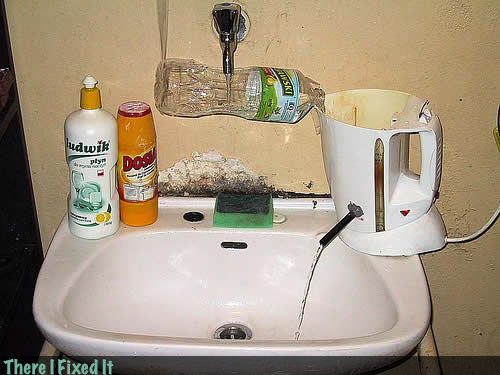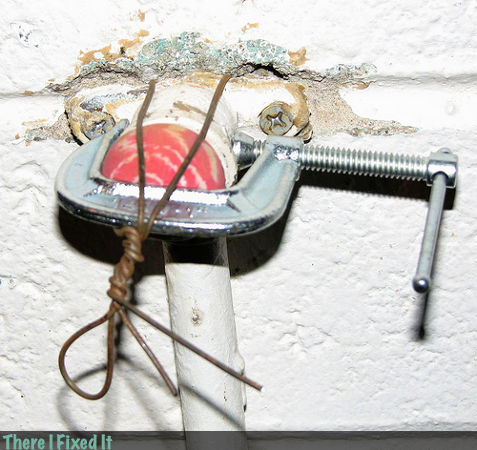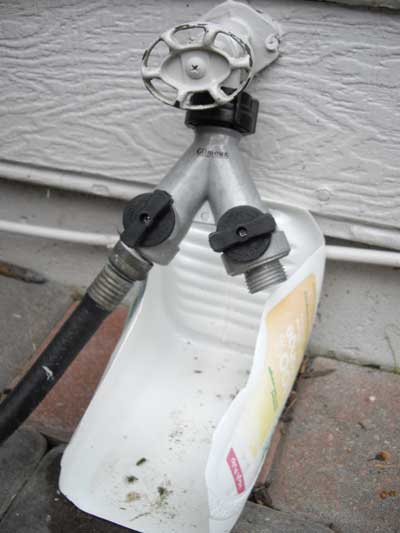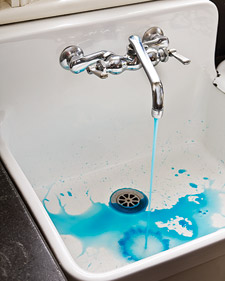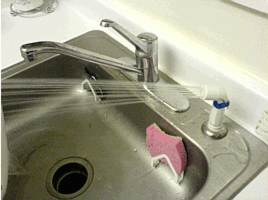WARNING: POST CONTAINS INFORMATION THAT MAY BE DISTURBING TO GERMAPHOBES.
Before you blame the public works establishment for your funny-tasting tap water, it might be a good idea to look in the mirror. Or in the kitchen faucet, actually. Maybe you’re at fault, by neglecting to disinfect your faucet aeration screen regularly like responsible folks do!
(What? Well, of course I…OK, I’m lying, I don’t.)
From this story on the kbs radio blog, think about what might be lurking right in your kitchen faucet:
That metal aeration screen at the end of your kitchen faucet reduces water flow, which is good for the environment, but not so much for your health: Running water keeps the screen moist, an ideal condition for bacteria growth. Because tap water is far from sterile, if you accidentally touch the screen with dirty fingers or food, bacteria can grow on the faucet, explains microbiologist Kelly Reynolds, PhD, an associate professor of community environment and policy at the University of Arizona College of Public Health. Over time, bacteria build up and form a wall of pathogens called biofilm that sticks to the screen. ”Eventually, that biofilm may even be big enough to break off and get onto your food or dishes,” she notes.
Now armed with this knowledge, here’s one more thing to add to your bottomless to-do list: (What? Yes, I definitely will. Just as soon as I finish this post, for sure!)
Once a week, remove the screen and soak it in a diluted bleach solution – follow the directions on the label. Replace the screen, and let the water run a few minutes before using.
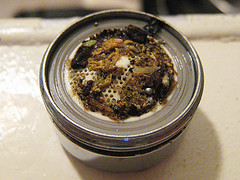 About the disgusting photo: From the real-life case of ertiepie on flickr, who
About the disgusting photo: From the real-life case of ertiepie on flickr, who
“got a new Britta filter for the kitchen faucet. this is what i discovered when i took off the old aerator/filter. yes, all the water we’ve been drinking at the apartment was being filtered through that…no, i won’t be cleaning it any more cuz we got a fancy new Britta on-faucet filter. Our water doesn’t taste all mineral-y or icky anymore, hurray!”

